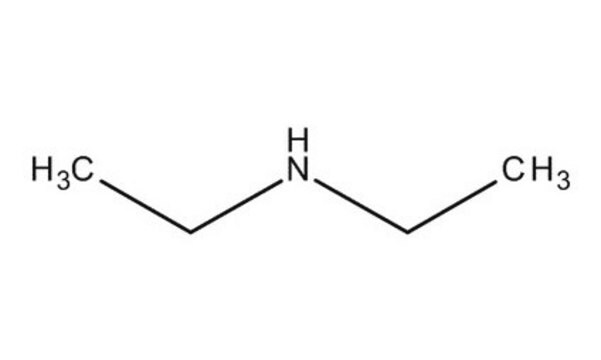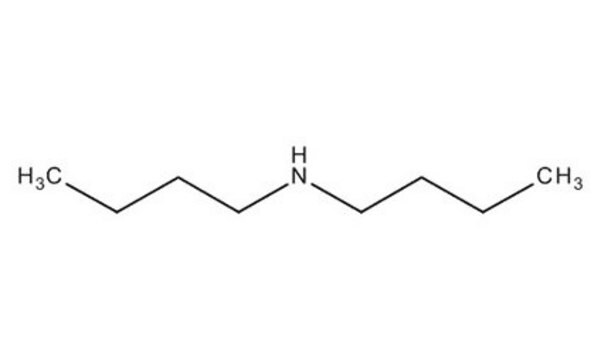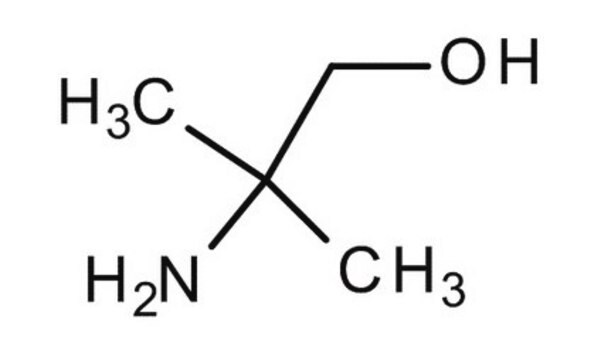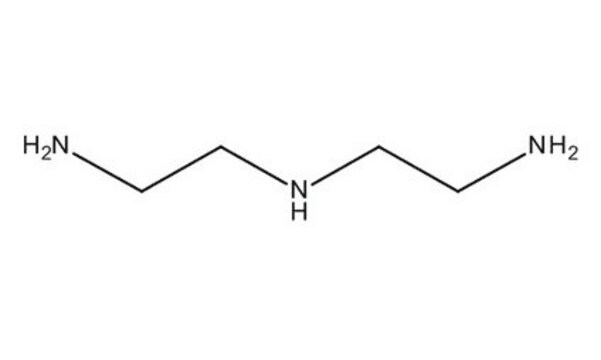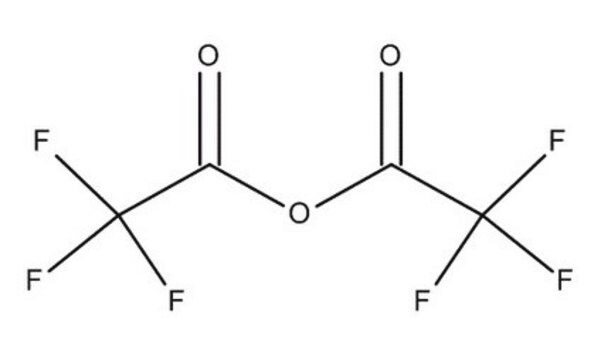8.03646
Diisopropylamine
for synthesis
Synonyme(s) :
Diisopropylamine, N,N-Diisopropylamine, Bis(1-methylethyl)amine
About This Item
Produits recommandés
Pression de vapeur
93.33 hPa ( 20 °C)
Niveau de qualité
Essai
≥99% (GC)
Forme
liquid
Température d'inflammation spontanée
295 °C
Puissance
420 mg/kg LD50, oral (Rat)
2900 mg/kg LD50, skin (Rabbit)
Limite d'explosivité
1.1-7.1 % (v/v)
pH
11.8 (20 °C, 6 g/L in H2O)
pb
83-84 °C/1013 hPa
Pf
-70 °C
Température de transition
flash point -13.45 °C (DIN 51755 Part 1)
Densité
0.72 g/cm3 at 20 °C
Température de stockage
2-30°C
Chaîne SMILES
N(C(C)C)C(C)C
InChI
1S/C6H15N/c1-5(2)7-6(3)4/h5-7H,1-4H3
Clé InChI
UAOMVDZJSHZZME-UHFFFAOYSA-N
Description générale
Application
- A reagent to synthesize furan, dihydrofuran, or butanolide derivatives by reacting with γ-ketothioesters.
- A catalyst to prepare aryl disulfides via oxidative coupling of aryl thiols in the presence of air as an oxidant.
- A base in Pd-catalyzed cross-coupling reactions such as Heck and Sonogashira reaction.
It can also be used as a starting material to prepare lithium diisopropylamide (LDA), a strong non-nucleophilic base widely used in organic synthesis for deprotonation reactions.
Mention d'avertissement
Danger
Mentions de danger
Classification des risques
Acute Tox. 3 Inhalation - Acute Tox. 4 Oral - Aquatic Chronic 3 - Eye Dam. 1 - Flam. Liq. 2 - Skin Corr. 1B - STOT SE 3
Organes cibles
Respiratory system
Code de la classe de stockage
3 - Flammable liquids
Classe de danger pour l'eau (WGK)
WGK 2
Point d'éclair (°F)
7.8 °F - closed cup
Point d'éclair (°C)
-13.45 °C - closed cup
Certificats d'analyse (COA)
Recherchez un Certificats d'analyse (COA) en saisissant le numéro de lot du produit. Les numéros de lot figurent sur l'étiquette du produit après les mots "Lot" ou "Batch".
Déjà en possession de ce produit ?
Retrouvez la documentation relative aux produits que vous avez récemment achetés dans la Bibliothèque de documents.
Les clients ont également consulté
Notre équipe de scientifiques dispose d'une expérience dans tous les secteurs de la recherche, notamment en sciences de la vie, science des matériaux, synthèse chimique, chromatographie, analyse et dans de nombreux autres domaines..
Contacter notre Service technique

